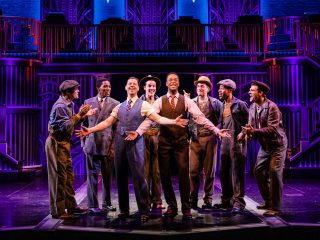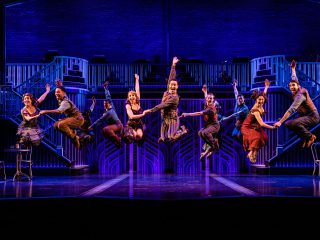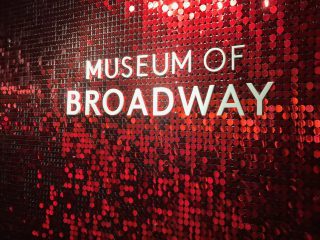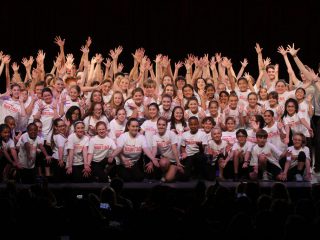In a recent article entitled “33 Ways to Remember the 2010’s”, New York Times Theater Critic Ben Brantley describes the predominance and prevalence of immersive theater as one of, if not the definitive, theatrical trend of the last decade. Its rise can be viewed as a reflection of the general direction of contemporary theater as a whole: moving further away from tradition, confinement, and stuffiness, and entering a new realm of exploration, investigation, and creative anarchy. Today we are going to explore the rise of immersive theater and analyze the trend.
First, a definition: what exactly do we mean when we say “immersive theater”? Broadly speaking, immersive theater is any performance piece that physically envelops the audience into the theatrical experience. This is often manifested by having actors and / or set pieces surround the audience. Sometimes there is a heightened level of audience interaction or participation. The traditional separation between spectator and performer is blurred or destroyed.
The grandaddy of all modern immersive theater shows is the hugely influential mega-hit Sleep No More, which has been running in New York since 2011. A stylish hybrid of Shakespeare’s Macbeth and a Hitchcock thriller, the show allows audience members (who wear masks) to explore dozens of rooms spread across many floors, following performers or allowing the story to come to them. As such, the experience of every audience member differs. Post show audience conversations often consists of: “Did you see this part?” or “Did you see the room where this happened?” Sleep No More is a choose-your-own-adventure style show in which each participant gets to shape their own narrative and drive their own experience.
In a similar vein is Third Rail Projects’ Then She Fell, another long-running New York based immersive show. A riff on Lewis Carroll’s Alice’s Adventures in Wonderland, Then She Fell pulls audience members from room to room of a psych ward, giving them private moments with the performers. Most of the scenes in the show are between a single audience member and a single actor. The intimacy and delicacy of these moments allow the tenderness and nuance of the narrative to shine through. Then She Fell also takes its immersive-ness a step further–at several junctures in the audience’s journey, they are invited to imbibe alcoholic elixirs. The show not only surrounds the spectator physically, it even engages their taste buds!
Other recent notable immersive shows include Dave Malloy’s pop opera Natasha, Pierre, and the Great Comet of 1812 (which transformed its space into a quirky / chic Russian supper club), and David Byrne and Fatboy Slim’s bio musical Here Lies Love (which jettisoned audience seats and instead was staged as a disco dance party, letting spectators groove through the rise and fall of the former First Lady of the Philippines Imelda Marcos).
Just last year, London’s Bridge Theatre staged a performance of A Midsummer Night’s Dream, in which the whole theater became the forest and the audience followed the actors, and the story, on foot.
In all these cases, the immersive nature of the piece allowed the audience to enter the world of the characters; more than just feeling the characters’ environment, the audience literally entered their headspace, feeling their feelings as their own.
This leads us to the “why”. What is the cause of this recent swell of immersive storytelling?
Well, in this era of smartphones and video games, entertainment is no longer merely a spectator sport. People want their content to respond to them in real time, to envelop them in the story. Theater, directly or inadvertently, has responded by trying to mimic some of these technological trends, putting the audience in the driver’s seat. An audience member at a “traditional” play sits patiently in the dark, watching the action unfold in front of them on the other side of the proscenium arch, protected by the “fourth wall”. Immersive theater gives the spectator a jolt of immediacy, an extra shot of “liveness”. They are given more agency, more power, and more control over their own experience.
This is part of a larger entertainment trend that includes virtual reality experiences and escape rooms. In both of these examples, the participant is driving their experience; their choices dictate the direction of the narrative. It is a full body, sensory experience. Likewise, immersive theater (at its best) can sweep an audience member into another world entirely, obscuring the boundary between the viewer and the viewed. Theater creators have used immersive theater to put audience members directly into historical moments; to illustrate political points; to take spectators into surreal and dizzyingly idiosyncratic worlds. When immersive theater works, it can be truly thrilling, easily getting under your skin, almost like a dream. Immersive theater aims to give an audience something extra: not just a night at a show, but an entire experience, an adventure, an event.�














